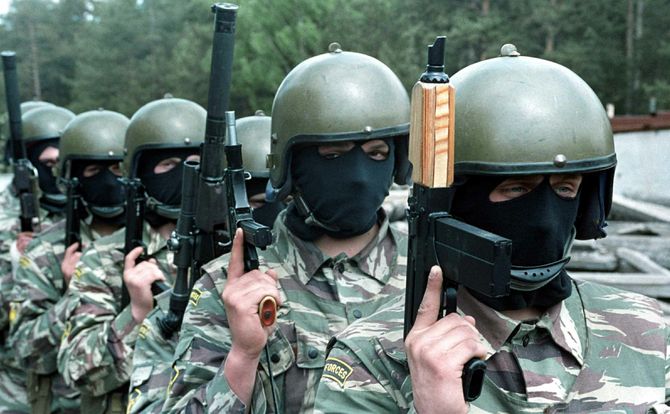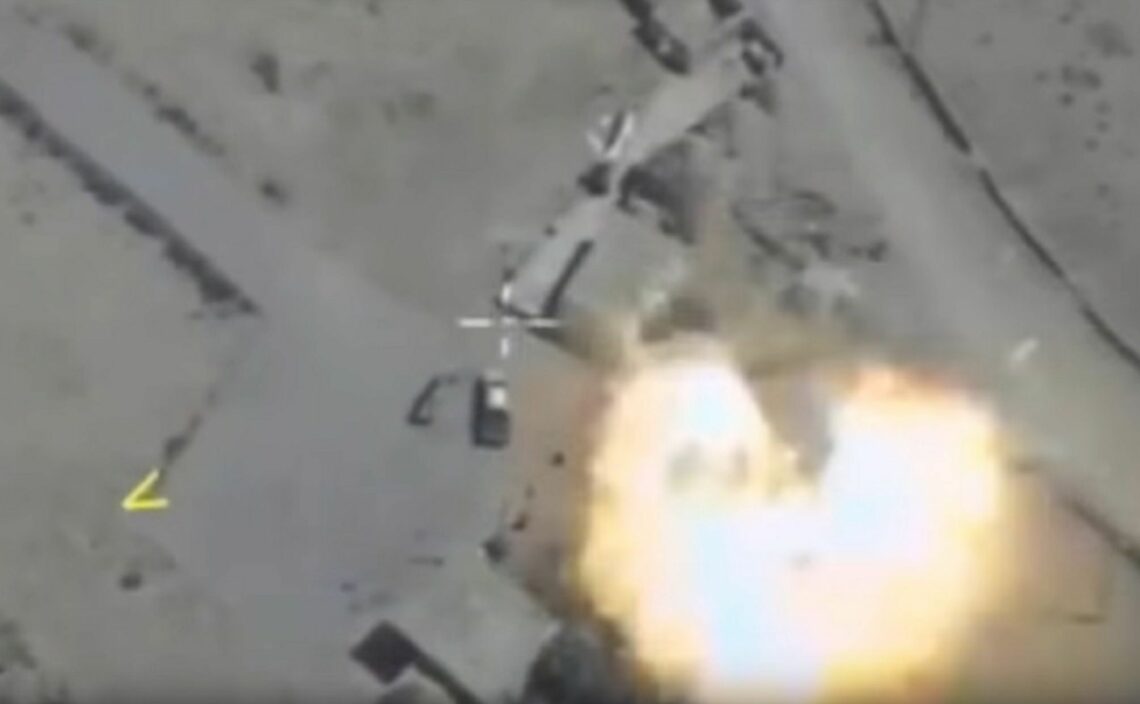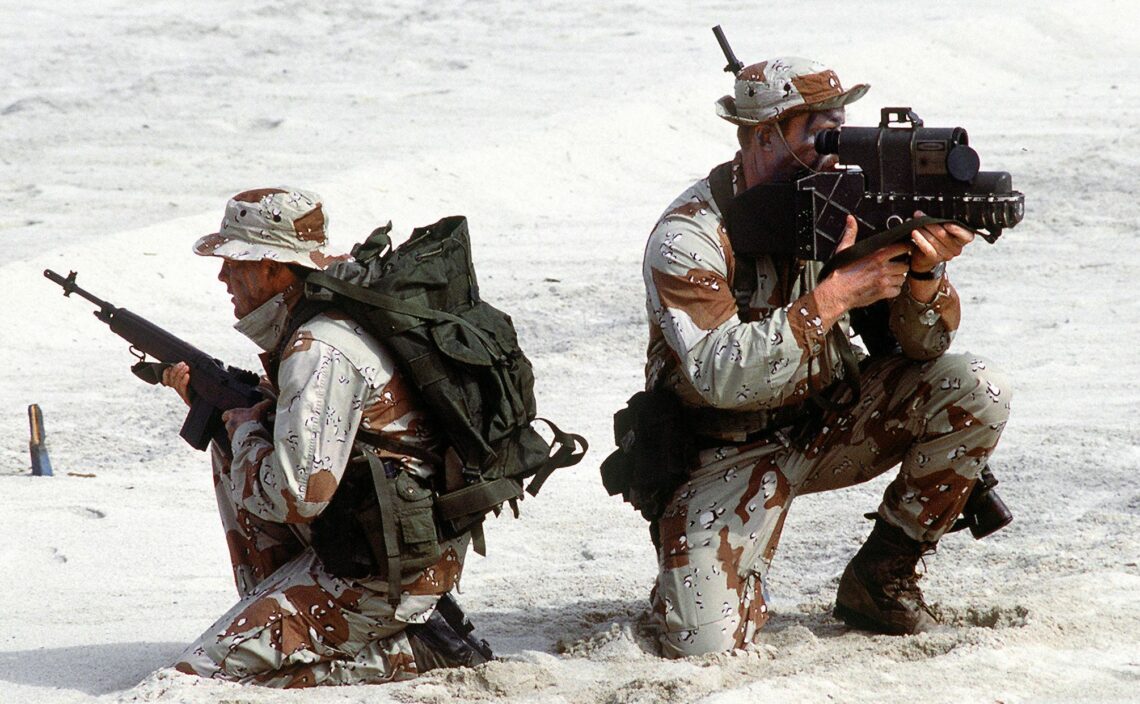The future of Russia’s Special Operations Forces
Russia’s special forces have gained prominence in recent years. Now they are training to engage their NATO counterparts. Though Russian special forces are still playing a game of technological catch-up, they are a tool the Kremlin is increasingly likely to use.

In a nutshell
- In 2013, Russia created a separate command for military special forces
- Recently, these forces have successfully carried out some high-profile missions
- They lag behind their Western counterparts in terms of technology and training
- Nevertheless, they are likely to become an increasingly used tool of the Kremlin
Russia’s lightning-quick intervention to seize and subsequently annex Crimea in 2014 will be long remembered for the sudden appearance of “little green men.” It was the ultimate stunt to ensure plausible deniability. The special operations forces that led the assault wore no identifying insignia and would not be drawn into a conversation. They appeared with sophisticated equipment and a degree of professionalism that caused some to draw parallels to American Navy SEALs and the Delta Force. And they accomplished the mission without bloodshed.
It did not take long for Russian President Vladimir Putin to come clean, admit that the little green men had been Russian regulars and praise them for their performance. It turned out that the Crimean operation had been something of a baptism by fire for the newly created Russian Special Operations Forces Command, known in Russian as KSSO (Komandovanie Sil Spetsialnykh Operatsii), established in 2013.
The operation was not pulled off by the special forces alone. The seizure of Crimea was supported by heavy forces, quietly inserted before the event into Russian-controlled Sevastopol. Some 40,000 regular troops were also deployed on the Russian side of the border, in Rostov Oblast, to discourage Ukrainian armed forces from interfering. Yet, without the professionalism of the Special Forces, the Crimean operation would have been a very different story.
There are good reasons for NATO military planners to keep a close eye on what is happening.
Looking forward, the main questions are what role the Russian military leadership envisions for its newly famous KSSO, and what type of training and equipment its forces may be slated to receive. There are good reasons for NATO military planners to keep a close eye on what is happening here.
‘Spetsnaz’ and other special forces
American and coalition forces have now spent two decades fighting mainly desert wars against vastly inferior opponents. Relearning how to deal with an adversary that is capable of wielding advanced military technologies and is used to operating in complex broken terrain will be an uphill struggle. The war in Ukraine has been a valuable learning experience, giving Western forces a taste of what Russian forces are capable of – from precision artillery strikes to sophisticated electronic warfare.
Although Russian special forces loom large in these events, it is essential to emphasize diversity and not to exaggerate novelty. Much as the media have blown the fuzzy notion of “hybrid warfare” way out of proportion, there has been a tendency to visualize “little green men” appearing in every conceivable conflict. The Russian efforts to support and sustain the insurrection in Ukraine’s Donbas region drives home that little green men do not win wars alone.
Much confusion derives from the fact that Russia has a long tradition of operating a broad variety of special forces. Russian “Spetsnaz” troops have been immortalized in countless novels and Hollywood movies. The reality that hides behind this word, an acronym for “special designation” (spetsialnovo naznacheniya), is one of great diversity.
The origin of the Spetsnaz dates to the 1950s, when the military’s Main Intelligence Directorate (GRU), decided to create special units for infiltration and sabotage behind enemy lines, with a special objective to find and destroy tactical nuclear weapons. GRU Spetsnaz units subsequently took part in the invasion of Prague in 1968, in the wars in Vietnam and Afghanistan, Angola and Lebanon.

The Russian Navy has its own Spetsnaz units for underwater warfare, ranging from providing base security to sabotage and diversionary operations. And the elite Airborne Troops (VDV) have developed their Spetsnaz forces, tasked with dropping deep behind enemy lines to prepare for the landing of heavier forces; the VDV’s 45th Guards Independent Reconnaissance Brigade played an important role in the assault on Grozny during the first Chechen war.
The point is that Spetsnaz is a catchall for a large variety of operators, under many different masters, ranging from foreign-wars experts to domestic anti-poaching units.
The Interior Ministry and the Federal Security Service (FSB) have long operated their own special forces, mainly under the acronym OMON. FSB units like Alfa, Vympel and Vityaz have gained notoriety in operations ranging from suppression of prison rebellions and race riots to resolving hostage crises. In the 1990s, FSB Spetsnaz units were deployed to combat violent organized crime and to help suppress the insurrection in Chechnya. They have since all been put under the aegis of the newly formed Russian National Guard.
Separate command
Leaving the domestic policing aside, the real novelty is the ambition to create a separate command for distinctly military operations, independent of the other branches of the Armed Forces. The background to its creation was linked to mounting resentment from the Russian Ground Forces against the GRU’s control over the Spetsnaz. It was believed that the GRU should confine itself to intelligence gathering and leave the soldiering to the regulars. The GRU forces’ poor performance during the 2008 war in Georgia helped tip the scales.
The military reform launched in 2009 made two significant changes. It transferred operational command over the Spetsnaz brigades from the GRU to the newly introduced military districts, and it established an independent Special Operations Directorate to answer directly to the General Staff, the Genshtab. Tasked with foreign interventions, sabotage and counterterrorism, in 2012 the latter was transformed into the current KSSO.
Russian special forces have a long way to go before they can match up with their Western counterparts.
When the innovation was made public, in 2013, chief of the Genshtab, Army General Valery Gerasimov, noted that its creation had been heavily inspired by experience gathered during a 2012 visit by the chief of the Genshtab at the time, Army General Nikolai Makarov, to the United States Special Operations Command (SOCOM) in Florida. Footage of operations by the KSSO and the U.S. Delta Force shows eerie similarities, down to helmets, tactical gear and camouflage uniform pattern.
The Russian side has a long way to go before it can match up with its Western counterparts. The U.S. SOCOM has over 70,000 personnel (including nearly 7,000 civilians), making it almost as large as the entire British Army. In contrast, the Russian KSSO is believed to have only 2,000. (If land, naval and airborne special forces are combined, the personnel figure reaches about 10,000. If domestic Spetsnaz and OMON are included, it comes to tens of thousands.)
Most importantly, the KSSO does not have the lavish funding that supports its U.S. counterpart. This means constraints on the sophisticated and expensive tactical gear crucial to the success of special operations. It also means it does not have access to air assets like the highly versatile MH-6 Little Bird helicopter and the modified MH-60 Black Hawk helicopter used by the Navy SEALs in the 2011 raid to capture Osama Bin Laden.
Combat operations
During its brief existence, the KSSO has nevertheless accumulated substantial combat experience. In addition to its operations in Ukraine, it has played roles in Syria. When a Turkish F-16 shot down a Russian Su-24M, the KSSO was tasked with rescuing the crew and finding the flight recorder. It has identified targets for Russian cruise missile strikes, undertaken high-value targeted killings, and participated in the bloody battles for Palmyra and Aleppo.

Even here the lines are fluid, between regular KSSO troops and private military contractors such as the Wagner Group, which are believed to remain under the GRU’s control. Although both operate under a cloak of secrecy, the private contractors are different in that they operate outside the limits of Russian law. Being deniable and expendable, their troops have taken far higher casualties than the KSSO and in a pinch, they will be disowned by the regular military.
A case in point played out in February 2018, when a Syrian pro-government force of about 500 troops, supported by tanks and armored personnel carriers, approached a Conoco gas plant in eastern Syria. The defenders included 30 Delta Force and Ranger troops. When the U.S. command used deconfliction channels to notify its Russian counterpart that air strikes would be called in, the latter not only denied all knowledge. It also refrained from warning Russian troops on the ground. Some 200-300 Wagner operatives are alleged to have been killed.
U.S. doctrine has been that heavy forces are better equipped to deal with such opponents. This may be changing.
Another important difference between Russian and U.S. Special Forces lies in the fact that the Russians are also tasked with confronting their counterparts on the opposing side. The U.S. doctrine has been that heavy forces are better equipped to deal with such opponents. Developments in Ukraine and Syria suggest that this is changing.
In the unlikely event, for example, of a Russian armed invasion of the Baltic states, NATO would be forced to live up to its commitments under Article 5 or face disintegration. But mobilizing and deploying sufficient heavy forces to expel the Russian invaders would take weeks.
In the meantime, the U.S. would insert special operations forces from staging posts in Poland. (Training for this is ongoing.) Those forces would interact with “stay-behind” units inside occupied territory and would be capable of doing serious damage to the invaders. This is where Russian Special Forces would be tasked with taking out their NATO counterparts.
Playing catch-up
For now, the two sides are playing catch-up in two different races. While the Russians are trying to develop the weaponry and emulate the tactics of Western special forces, the U.S. troops are learning to operate in environments where they are the weaker part, where they will have seriously degraded communications, where they will not be able to call in artillery or air strikes, and where “lighting up” radars and other electronic gear will attract immediate counterstrikes.
It is unclear exactly how much clout the GRU retains over its former Spetsnaz brigades.
On the Russian side, this race is unfolding under conditions of great uncertainty as to who is calling the shots. It is unclear exactly how much clout the GRU retains over its former Spetsnaz brigades. There are substantial differences in “culture” between various parts of the Spetsnaz community – where the FSB has favored training individualists, the KSSO is focused on team building. And the relation between the private contractors and the “official” special forces remains to be sorted out.
Operatives from the Wagner Group have been reported in places ranging from Ukraine and Syria to Sudan, the Central African Republic and Congo. It is rumored that about 400 of its operators have been flown into Venezuela, via Cuba, to provide security for President Nicolas Maduro. Its actions in Syria and Libya have reportedly also involved earning a share in the loot if it can secure Russian control over oil assets.
Continued infighting can be expected between the various stakeholders in this process. Division commanders will fight hard to retain their Spetsnaz units. Protecting its private contractors, the GRU will seek to stifle the growth of the KSSO. Diverging philosophies in individualism versus team building will hamper its training. And competition for funds between regular and special operations forces will constrain the latter’s acquisition of cutting-edge equipment.
Rivalries of this sort will slow down the concentration of effort and resources that are needed if the KSSO is to emerge as a matching rival to SOCOM. But it will not thwart the effort. It is significant that while October 24 has traditionally been Spetsnaz Day, in 2015 President Putin designated February 27 as Special Operations Forces’ Day, chosen to mark the assumption of control over Crimea.
The KSSO has acquired its separate aviation command. It is receiving new equipment, ranging from sniper rifles and silenced mortars to futuristic miniature submarines. And the operation in Crimea proved it had developed strong tactical skills. Unless it ends up being crushed in inter-service turf wars, it could develop into a finely honed instrument for new forms of special warfare, useful in missions ranging from expeditionary operations in foreign lands to suppression of domestic insurgencies and – in case of war with NATO – even interdicting U.S. Special Forces.







